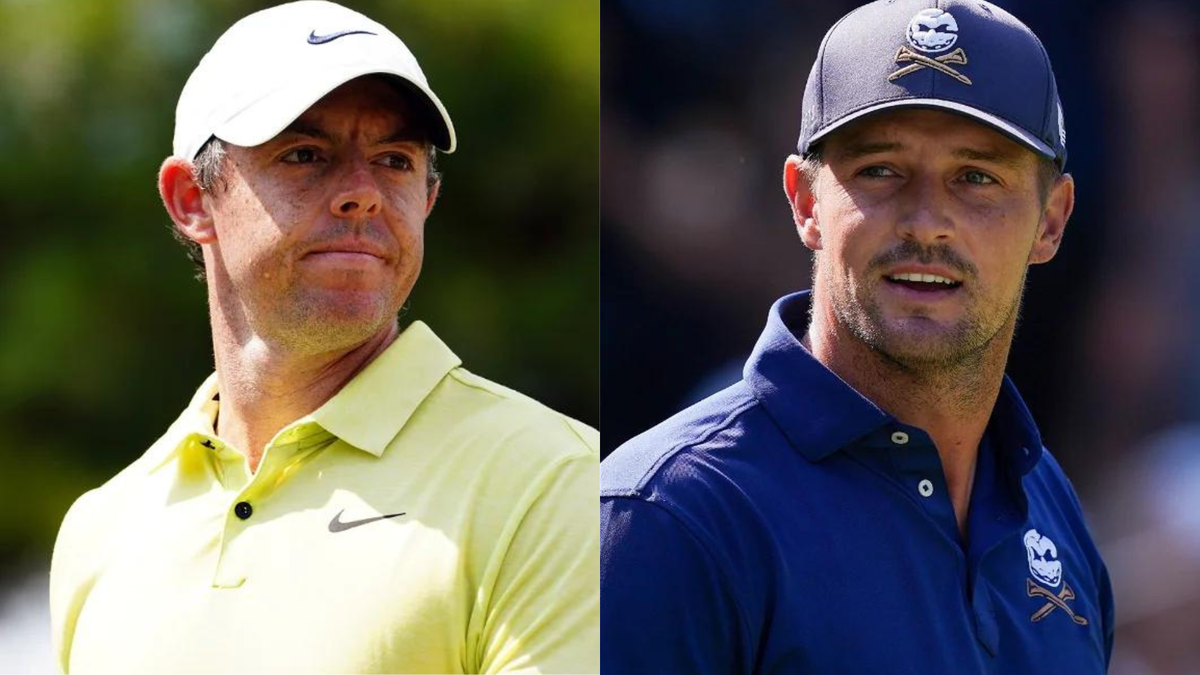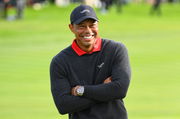
Imago
Source Credit: IMAGO

Imago
Source Credit: IMAGO
Within 24 hours of Rory McIlroy confirming his commitment to the Australian Open, tournament organizers witnessed something extraordinary. Ticket sales shattered the event’s 121-year record. Hospitality suites at Royal Melbourne sold out almost immediately. The message couldn’t be clearer—global markets are hungry for elite golf.
Watch What’s Trending Now!
Fast forward to January 2025, and a similar scene unfolded in India. Bryson DeChambeau drew 8,000 to 10,000 spectators daily at the International Series India. Compare that to the typical 2,000 attendees at Indian golf tournaments. The crowds traveled from various states just to watch him play. Hundreds lined up behind the driving range each morning, eager to catch his practice sessions.
These aren’t isolated incidents. They’re proof that the Northern Irishman’s Champions League-inspired concept for global golf isn’t just “pie in the sky stuff” anymore. It’s happening right now, one tournament commitment at a time. McIlroy drastically restructured his 2025 schedule. He slashed his tournament appearances from 27 events in 2024 to just 18-20 in 2025. That’s a 25% reduction. More telling? He played 19 PGA Tour events in 2024 but participated in only 14 through August 2025.
ADVERTISEMENT
Bryson DeChambeau is the first reigning major champion to play in India in the last 6 decades, as the International Series will set a new record crowd for a professional golf event in the country.
Bryson said about the opportunity:
“It’s going to be so much fun. But it’s more… pic.twitter.com/c9HAUQZxzP
— Flushing It (@flushingitgolf) January 28, 2025
The four-time major champion even skipped the FedEx St. Jude Championship, the first playoff event. His reasoning was straightforward—he was “basically dead tied for 68th in a 70-man field.” This wasn’t about fatigue. The world No. 2 was making a statement about the future direction of golf. “There’s a few tournaments that I played this year that I don’t usually play and that I might not play next year,” he revealed at the HSBC Abu Dhabi Championship. He confirmed plans to scale back to 18 or 19 events and might skip two of the eight signature tournaments.
His concern centers on oversaturation. “I can see when the golf consumer might get a little fatigued of everything that’s available to them,” McIlroy explained. He referenced the NFL’s scarcity model as potentially beneficial for the sport of golf.
ADVERTISEMENT
Golf Channel analysts warned that this shift signals a potential “freelancer era,” where players choose when and where to compete rather than adhering to tour obligations. The comparison to Roger Federer’s late-career freedom resonates strongly. McIlroy appears ready to chart his own path, prioritizing flexibility and selectivity over mandatory commitments.
The PGA Tour requires a minimum of 15 events for membership. McIlroy’s actions send a clear message—global growth matters more than protectionist policies.
ADVERTISEMENT
Instead of just talking about international expansion, McIlroy committed to action. He’ll make his India debut at the DP World India Championship from October 16-19, 2025, at Delhi Golf Club. The tournament features a record-breaking $4 million purse, making it the richest professional golf event ever held in India.
“I’m excited to not only tee it up in India for the first time but also visit a country that I’ve always wanted to explore,” McIlroy stated. He emphasized India’s tremendous potential for golf growth. “This is a great opportunity, and I can’t wait to play in front of Indian golf fans.”
Then came his Australian commitment—a two-year deal for the 2025 and 2026 Australian Open at Royal Melbourne. The December 4-7, 2025, tournament marks his first return to Australia since 2014. “I’m proud to be committing to the Australian Open for the next two years, especially with it being played on the world-class Melbourne Sandbelt,” he said.
ADVERTISEMENT
His strategy now prioritizes DP World Tour events while reducing PGA Tour commitments. He starts in Dubai, then essentially doesn’t play in Europe again until the Scottish Open before returning for the Irish Open, Wentworth, and Dunhill.
The commercial opportunity drives this shift. PGA Tour revenues hover around $2.3 billion. “So how do we get that number up to four or six?” McIlroy asked during the Genesis Invitational. “To me, it is by looking outward. They need to think internationally and spread their wings a bit.”
He outlined his Champions League concept last year—a tour for the top 80 players playing roughly 24 events globally. Four majors plus 20 limited-field tournaments. “Everything sort of feeds up into that one,” he explained, comparing it to European football’s elite competition, where the best leagues feed upward.
ADVERTISEMENT
Top Stories
Tiger Woods Accepts New Job That Could Change PGA Tour Forever

Jeeno Thitikul Issues Emotional Plea as Country Faces Severe Calamity: ‘Please Help’

Complaints Pour In After Potential PGA Tour Changes Surface Weeks Before 2026 Season

Paige Spiranac Nearly Took Legal Action After ‘Death Threats’ Over Internet Invitational Scandal

Lexi Thompson Admits Injuries Are Still Holding Her Back in Emotional Message

Bryson DeChambeau and Rory McIlroy lead golf’s international push
DeChambeau arrived in India with a clear mission. “First off, I want to say thank you to all of India for welcoming me so warmly,” he began. “My mission in the game of golf is to first off, inspire, entertain, and a subtle part of it is to educate as well.”
He expanded on this philosophy at DLF Golf and Country Club. “Educate, entertain, and inspire are my main three principles of why I play the game of golf. I think this is an amazing opportunity for all of golf to come together and see what India can truly produce for the world.”
The first defending major champion to compete in an official tournament on Indian soil didn’t disappoint. DeChambeau finished second with a 6-under 282, earning $220,000. His spectacular chip-in eagle on the 8th hole captivated the massive galleries.
Beyond the golf, DeChambeau visited the Taj Mahal and engaged extensively with young fans. Local academy officials predicted a dramatic increase in youth enrollment, similar to the surge that followed Tiger Woods’ 2014 exhibition. Karan Bindra, who runs the academy at DLF, witnessed firsthand the impact star power creates. The crowds DeChambeau drew represented four to five times the typical attendance. Despite thick fog and challenging conditions, fans showed up. They wanted to see world-class golf in their backyard.
The economics justify the movement. The Victorian Government estimates McIlroy’s Australian appearance could generate approximately $20 million in economic returns. That mirrors Tiger Woods’ impact at the 2009 Australian Masters.
The International Series India represented part of LIV Golf’s $300 million investment commitment into the Asian Tour over ten years. India’s positioning as a key market for golf expansion reflects the confidence of corporate investors.
India now hosts two separate DP World Tour events in 2025—the first time since 2008—the Hero Indian Open in March and the DP World India Championship in October signal unprecedented growth. FanCode secured exclusive broadcast rights for the PGA Tour in India, streaming over 40 events annually. The deal followed a gap after Eurosport’s agreement ended in 2023.
Meanwhile, other top players follow similar patterns. Jon Rahm is committed to 14 LIV Golf tournaments, four majors, and four DP World Tour events in 2025. Viktor Hovland and Tommy Fleetwood both confirmed their India Championship participation alongside McIlroy.
Delhi Golf Club President Raj Khosla captured the aspiration perfectly. “When they leave India, I want them to go back and think to themselves, ‘When am I going to come back here again?'”
Based on ticket sales, economic impact, and crowd enthusiasm, they will likely want to return sooner rather than later. The global tour isn’t coming—it’s already here.
ADVERTISEMENT
ADVERTISEMENT
ADVERTISEMENT

